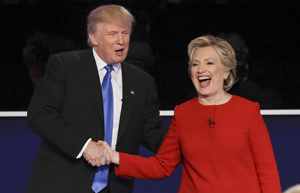Washington, Oct 13: With just 100 days left in Barack Obama's presidency, a top American think-tank has suggested the new US president should meet Prime Minister Narendra Modi within first 100 days to strongly signal importance of continuing close relations between the two countries.
 In a major report on 'India-US Security Co-operation', the Center for Strategic and International Studies (CSIS) urges the upcoming administration to ensure that India signs the foundational agreements, which it believes is important for strengthening the India-US defense relationship.
In a major report on 'India-US Security Co-operation', the Center for Strategic and International Studies (CSIS) urges the upcoming administration to ensure that India signs the foundational agreements, which it believes is important for strengthening the India-US defense relationship.
The absence of such agreements will also make it nearly impossible (if not completely impossible) for the US to provide to India certain advanced sensing, computing and communications technologies that India believes are necessary for its own defense capabilities, it said.
"The next administration should work with Australia, India and Japan to establish a quadrilateral security dialogue, led by the US State Department and foreign ministries. The dialogue should focus on issues of common interest across the Pacific and Indian Ocean regions," the report said.
It said creating a specific opportunity for the US president and Indian Prime Minister to meet in the first 100 days will send a strong signal about the importance of bilateral ties.
CSIS in its report recommends that the US and India should deepen announced efforts on submarine safety and anti-submarine warfare to include combined training and exercises to expand the capability of both countries as well as their interoperability with each other.
Seeking to increase the FDI limit in defense sector to 100 per cent, the report also calls for strengthening and expanding the homeland security dialogue.
The think-tank recommends the new president should invite India to participate (as an observer or stakeholder) in the Quadrilateral Coordination Group talks with the Taliban.
It also urges for establishing a US-India dialogue on the Middle East, modeled on the "East Asia Consults" of the US State Department and India's Ministry of External Affairs.
CSIS said Modi's emergence as a strong leader, just as the US was seeking to consolidate its strategy of re-balance to the Asia Pacific, gave America an opportunity to engage with a rising leader in India, and India an opportunity to reprioritise and rethink its engagement with the world.
Obama continues a bipartisan run of three presidents who have seen India as key to US strategy in Asia, it said.
Observing that Obama has built a strong relationship with Modi, and maintained a high tempo of engagements at the highest levels, the report said the US engagement with India has increasingly focused on the security aspects and India has responded with uncharacteristic warmth to this outreach.





Comments
Its better for India to join hands with Russia....US is a selfish country...they dont think about us but themselves....
Modi's fashion designer got another job to stitch 6 more dress per day for meet.
Add new comment